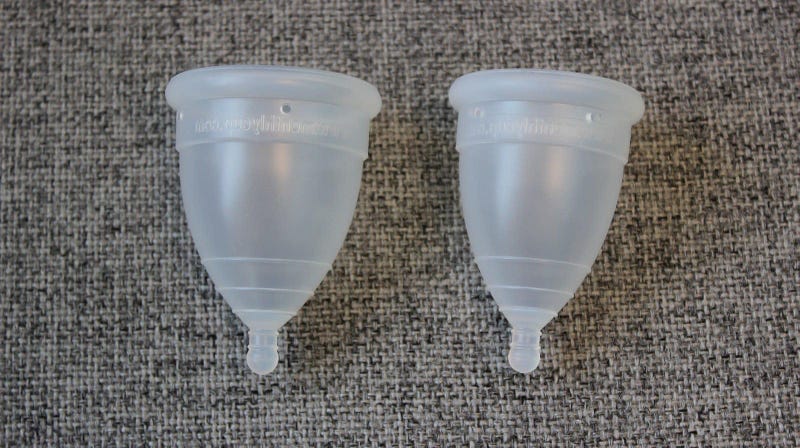 Photo: Errikaboo (Wikimedia Commons)
Photo: Errikaboo (Wikimedia Commons)
People who prefer using menstrual cups during their period can be reassured by a new study out this week. It suggests the products are cost-effective and environmentally friendly compared to tampons and pads, while still being safe and able to provide roughly the same level of protection against leakage. But there needs to be more quality research into their benefits and risks, the researchers write.
The concept of the cup, which is inserted into the vagina to collect menstrual blood, has existed since at least the 1930s. But the products themselves have never been widely used. It’s only lately, thanks partly to new brand-name products like the Diva Cup, that they’ve seen a spike in popularity.
The authors of the study, published in the Lancet on Tuesday, reviewed the relatively little amount of medical literature there is surrounding menstrual cups. They looked at 43 studies involving just over 3,300 women living in both developing and developed countries, dating as far back as the 1960s. While most of these studies asked women how they felt about using menstrual cups, or what factors would make them more likely to use them, a few also directly compared women using menstrual cups to those using tampons or pads.

The Ancestor Of The Menstrual Cup Was More Like A Menstrual Canteen
The first modern-style menstrual cup was patented in 1932, but that wasn’t the first time inventors …
Read more Read
Overall, they found, there were no major added health risks—such as infections or a change in the microbial environment of the vagina—seen in women who used the cups. Cup users also had similar or even lower levels of menstrual blood leakage than those who used tampons and pads. And 70 percent of women said they were comfortable with continuing to use the cups, once they grew familiar with them.
“Menstrual cups seem to be an effective and safe alternative to other menstrual products,” the authors write.
At the same time, there do seem to be some questions left unanswered by the existing research. For instance, there were five reports of toxic shock syndrome—a condition caused by the overgrowth of certain bacteria in the vagina—documented among cup users. Risk factors for toxic shock have historically included tampon use, since the tampon’s pooling of blood can create a rich source of food for bacteria. But toxic shock is still incredibly rare (there were slightly over 400 documented cases in the U.S. in 2017, according to the Centers for Disease Control and Prevention), and the risk is thought to be lower if you avoid super-absorbent tampons.
But because we really don’t know how many women use menstrual cups, nor how many of those women have ever developed toxic shock, there’s no way to gauge the potential risk associated with the products. There were also reports of women who dislodged their intrauterine devices, or IUDs, while using the cups. But again, we have no idea how common that might be.
Still, these cups could certainly be a financial bargain. They’re typically made of medical-grade silicone, rubber, or latex, and can last for up to a decade of use (there are disposable versions as well). Over that decade, the authors calculated, the cost of a cup could be as little as 5 or 7 percent of the monthly cost of disposable pads or tampons, respectively (assuming 12 pads or tampons were used per period). The cups would also generate a fraction of the plastic waste of either products. That cost-effectiveness is especially appealing in low-income countries, where resources are often scarce for women. As with the possible health risks, though, the authors cautioned that we still need more data on the potential savings these products could offer.
Another stumbling block, at least right now, is their obscurity. Even in high-income countries, the authors found, only as many as 30 percent of women even knew that these products existed. Similarly, only a third of educational websites reviewed by the authors mentioned cups as an option when detailing menstrual products.
“Information on menstrual cups should be provided in puberty education materials,” the authors wrote. “Policy makers and programs can consider this product as an option in menstrual health programs.”
Share This Story